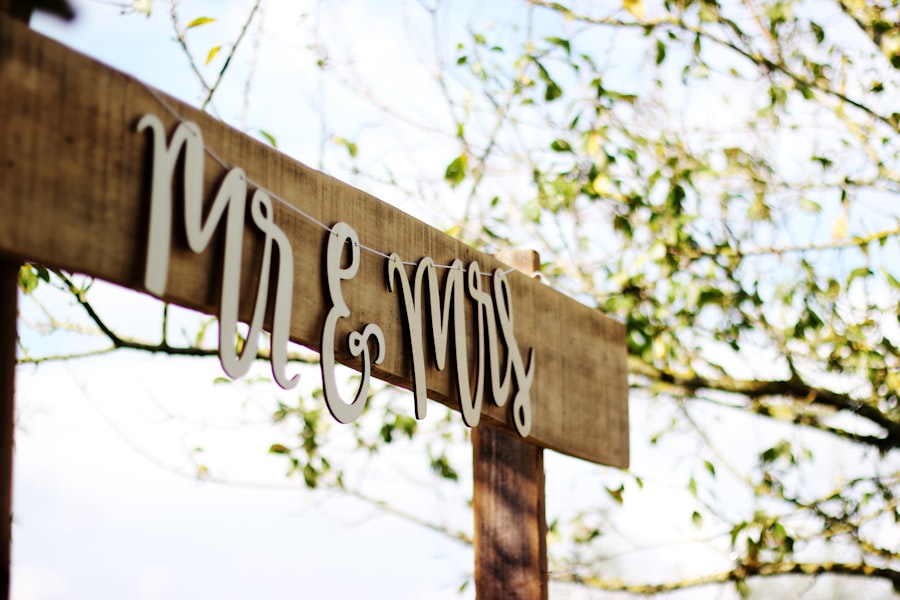Traditional marriage ceremonies have long been a cornerstone of human culture, serving as a public declaration of love and commitment between two individuals. These ceremonies vary widely across different cultures and societies, each infused with unique customs, rituals, and meanings that reflect the values and beliefs of the community. From the vibrant colors of Indian weddings to the solemnity of Western nuptials, traditional marriage ceremonies encapsulate the essence of love, family, and societal expectations.
They are not merely events; they are significant milestones that mark the beginning of a shared journey, often steeped in history and cultural significance. The rituals associated with traditional marriage ceremonies often serve to reinforce the bonds between not just the couple but also their families and communities. They provide a framework within which love is celebrated, promises are made, and the couple is welcomed into a new phase of life.
In many cultures, these ceremonies are elaborate affairs that can last several days, filled with various rites and celebrations that highlight the importance of unity and togetherness. The rich tapestry of traditions surrounding marriage reflects the diverse ways in which societies honor love and commitment, making each ceremony a unique expression of cultural identity.
The Importance of Timeless Love in Marriage
Timeless love is often regarded as the foundation upon which successful marriages are built. It transcends fleeting emotions and superficial attractions, embodying a deep-seated connection that withstands the tests of time. This enduring love is characterized by mutual respect, understanding, and a commitment to nurturing the relationship through life’s inevitable challenges.
In traditional marriage ceremonies, this concept is frequently emphasized through vows and promises that couples make to one another, pledging to support and cherish each other for better or worse. The significance of timeless love extends beyond the couple; it influences their families and future generations. When couples embody this enduring love, they set an example for their children and community, demonstrating the value of commitment and partnership.
This legacy of love can create a ripple effect, fostering strong familial bonds and encouraging future generations to prioritize meaningful relationships. In many cultures, the celebration of timeless love during traditional marriage ceremonies serves as a reminder that true love is not just about passion but also about perseverance, patience, and unwavering support.
The Symbolism and Meaning Behind Traditional Marriage Rituals

Traditional marriage rituals are rich in symbolism, often designed to convey deeper meanings about love, commitment, and unity. For instance, in many cultures, the exchange of rings symbolizes an unbreakable bond between partners, representing eternity due to their circular shape. Similarly, the act of lighting a unity candle or tying a knot during the ceremony signifies the merging of two lives into one.
Each ritual serves as a tangible representation of the couple’s promises to one another and their commitment to building a life together. In addition to personal symbolism, many traditional marriage rituals also reflect broader cultural beliefs and values. For example, in some African cultures, the bride price or dowry is paid by the groom’s family to signify respect for the bride’s family and acknowledgment of her worth.
This practice underscores the importance of family ties and community involvement in marriage. Similarly, in Hindu weddings, the Saptapadi ritual involves the couple taking seven steps together, each step representing a specific vow they make to one another. These rituals not only enhance the emotional significance of the ceremony but also serve to connect the couple to their cultural heritage.
The Traditional Marriage Ceremony Script: Step by Step
A traditional marriage ceremony typically follows a structured script that guides the proceedings from start to finish. While variations exist depending on cultural practices, many ceremonies share common elements that create a cohesive experience for both the couple and their guests. The ceremony often begins with an introduction by an officiant who welcomes everyone and sets the tone for the event.
This opening remarks section may include reflections on love and marriage, providing context for the significance of the day. Following the introduction, couples usually participate in a series of rituals that may include readings or prayers, exchange of vows, and ring exchanges. The vows are particularly poignant moments where couples articulate their promises to one another, often drawing from traditional texts or crafting personalized statements that reflect their unique relationship.
After exchanging rings, many ceremonies incorporate additional rituals such as lighting a unity candle or performing a sand ceremony, symbolizing their union. The officiant then pronounces them married, often concluding with a kiss that marks their first act as a married couple.
Incorporating Personalized Touches into a Traditional Ceremony
While traditional marriage ceremonies are steeped in customs and rituals, many couples choose to incorporate personalized touches that reflect their individual personalities and shared experiences. Personalization can take many forms, from selecting meaningful readings or songs to including family heirlooms in the ceremony. For instance, couples might choose to write their own vows instead of relying solely on traditional texts, allowing them to express their feelings in a way that resonates more deeply with their relationship.
Another way to personalize a traditional ceremony is through unique rituals that hold special significance for the couple. For example, some couples may choose to include a wine box ceremony where they seal letters to each other along with a bottle of wine to be opened on a future anniversary. This not only adds a personal touch but also creates an opportunity for reflection on their journey together as they celebrate milestones in their marriage.
By blending traditional elements with personal touches, couples can create a ceremony that honors their heritage while also celebrating their unique love story.
Honoring Family and Cultural Traditions in the Marriage Ceremony

Family and cultural traditions play an integral role in shaping traditional marriage ceremonies. Many couples find it essential to honor their heritage by incorporating specific customs that have been passed down through generations. This might include wearing traditional attire that reflects their cultural background or participating in rituals that hold historical significance within their families.
For instance, in Jewish weddings, the breaking of the glass symbolizes the fragility of relationships and serves as a reminder of both joy and sorrow in life. In addition to honoring cultural practices, many couples also seek to involve their families in meaningful ways during the ceremony. This could involve having family members participate in readings or blessings or even including ancestral traditions that celebrate lineage and heritage.
By weaving family traditions into their wedding ceremony, couples not only pay homage to their roots but also create an inclusive atmosphere that strengthens familial bonds on this significant day.
The Role of Faith and Spirituality in Traditional Marriage Ceremonies
Faith and spirituality often play pivotal roles in traditional marriage ceremonies across various cultures. For many couples, these elements provide a framework for understanding love and commitment within a larger spiritual context. Religious rituals can imbue the ceremony with profound meaning, offering blessings from a higher power as couples embark on their marital journey together.
In Christian weddings, for example, prayers are often recited to invoke divine guidance and support for the couple’s union. Different faiths have unique customs that reflect their beliefs about marriage. In Islamic weddings, for instance, the Nikah ceremony includes reciting verses from the Quran and signing a marriage contract known as the Nikah Nama.
This contract outlines the rights and responsibilities of both partners within the marriage according to Islamic law. Similarly, Hindu weddings involve sacred fire rituals where couples make vows before Agni (the fire god), symbolizing purity and commitment. These spiritual dimensions not only enhance the significance of the ceremony but also provide couples with a sense of purpose as they navigate their lives together.
Keeping the Flame of Timeless Love Alive in Marriage
The journey of marriage extends far beyond the wedding day; it requires ongoing effort to keep the flame of timeless love alive. Couples must actively nurture their relationship through communication, shared experiences, and mutual support. Regularly expressing appreciation for one another can strengthen emotional bonds and foster an environment where both partners feel valued and understood.
Simple gestures like leaving notes or planning surprise date nights can reignite passion and remind couples of their initial connection. Moreover, facing challenges together can deepen intimacy and resilience within a marriage. Couples who approach difficulties as a team often emerge stronger than before; this shared experience reinforces their commitment to one another.
Engaging in activities that promote growth—such as attending workshops or seeking counseling—can also be beneficial in maintaining a healthy relationship dynamic. Ultimately, keeping the flame of timeless love alive requires dedication from both partners to prioritize their relationship amidst life’s demands while continually finding ways to celebrate their unique bond.
FAQs
What is a marriage ceremony script?
A marriage ceremony script is a written outline of the order of events and the words that will be spoken during a wedding ceremony. It includes the vows, ring exchange, readings, and any other special rituals or traditions that the couple wishes to include.
Why is a marriage ceremony script important?
A marriage ceremony script is important because it helps the couple and their officiant plan and organize the wedding ceremony. It ensures that all necessary elements are included and that the ceremony runs smoothly.
Who typically writes the marriage ceremony script?
The marriage ceremony script is typically written by the couple getting married in collaboration with their officiant. The couple may also seek input from family members or incorporate cultural or religious traditions into the script.
What elements are included in a marriage ceremony script?
A marriage ceremony script typically includes an opening, vows, ring exchange, readings, any special rituals or traditions, and a closing. The script may also include any special instructions for the wedding party or guests.
Can a marriage ceremony script be personalized?
Yes, a marriage ceremony script can be personalized to reflect the beliefs, values, and personalities of the couple getting married. Couples can include personal vows, readings that are meaningful to them, and any special rituals or traditions that hold significance for them.










